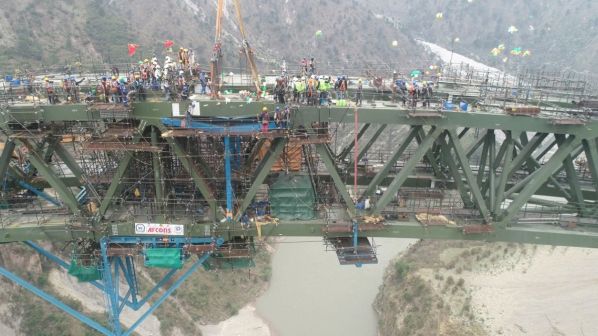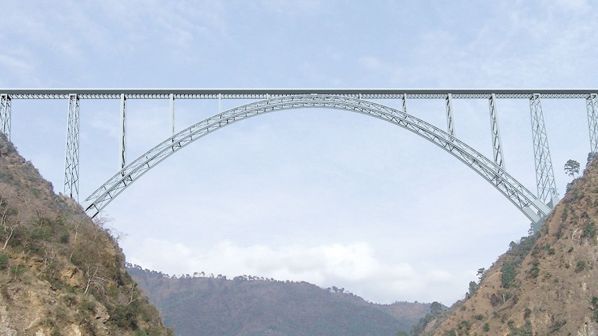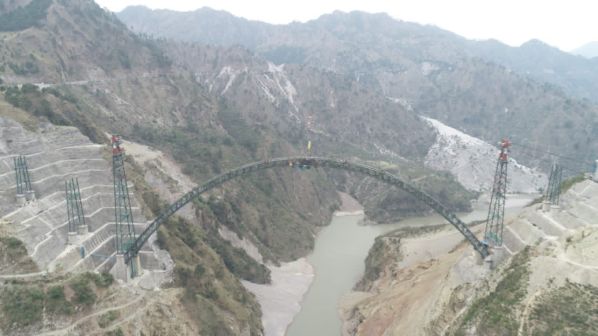INDIAN Railways (IR) completed construction of the arch to support the world’s highest railway bridge on the 326km Udhampur - Srinagar - Baramulla Rail Line (USBRL) on April 5, 17 years after the first tender for the project was floated.
The Chenab Bridge will be a critical link on India’s national network, and is being built 359m above the river bed, 35m higher than the Eiffel Tower.
When the line is completed, the journey from Jammu to Srinagar will take approximately 5h 30min, crossing the River Chenab at 100km/h. The road journey current takes 12 hours. “One expects that tracks will be laid on the bridge in good time,” says former IR board chairman, Mr Vivek Sahai.
Spanning 1315m and costing Rs 14.9bn ($US 200.2m), the 17-span bridge will have a design life of 120 years. Viaduct and foundations have been designed by WSP, Finland, and the arch design by Leonhard, Andra and partners of Germany. URS and Cowi, Britain, have also provided consulting services for the project.

While the USBRL is partially operational, the unfinished 111km Katra - section poses a huge engineering challenge; 27 tunnels with a combined length of 97km, and 37 bridges with a combined length of 7km are planned through the ecologically sensitive Himalayan range in the northern region of Jammu and Kashmir.
Construction of the Chenab Bridge is continuing, with the stay cables to be removed and arch ribs to be filled with concrete before the viaduct is built and track laying can begin. IR has set a completion target of December 2022, but former IR chief engineer, Mr Alok Kumar Verma, says there is a possibility the completion of the line could be extended to 2030.

Since the USBRL contract was awarded in 2004, with a 30-month completion deadline, approximately half a dozen extensions have been sought and granted by the Railway Board and project costs have climbed.
IR officials have attributed the delays in bridge construction to multiple issues including initial obstacles relating to land acquisition because of protests from local groups demanding better financial compensation. A Public Interest Litigation questioning the safety and stability of the line and the bridge has also remained pending in Indian courts.
For detailed data on rail projects around the world, subscribe to IRJ Pro.

